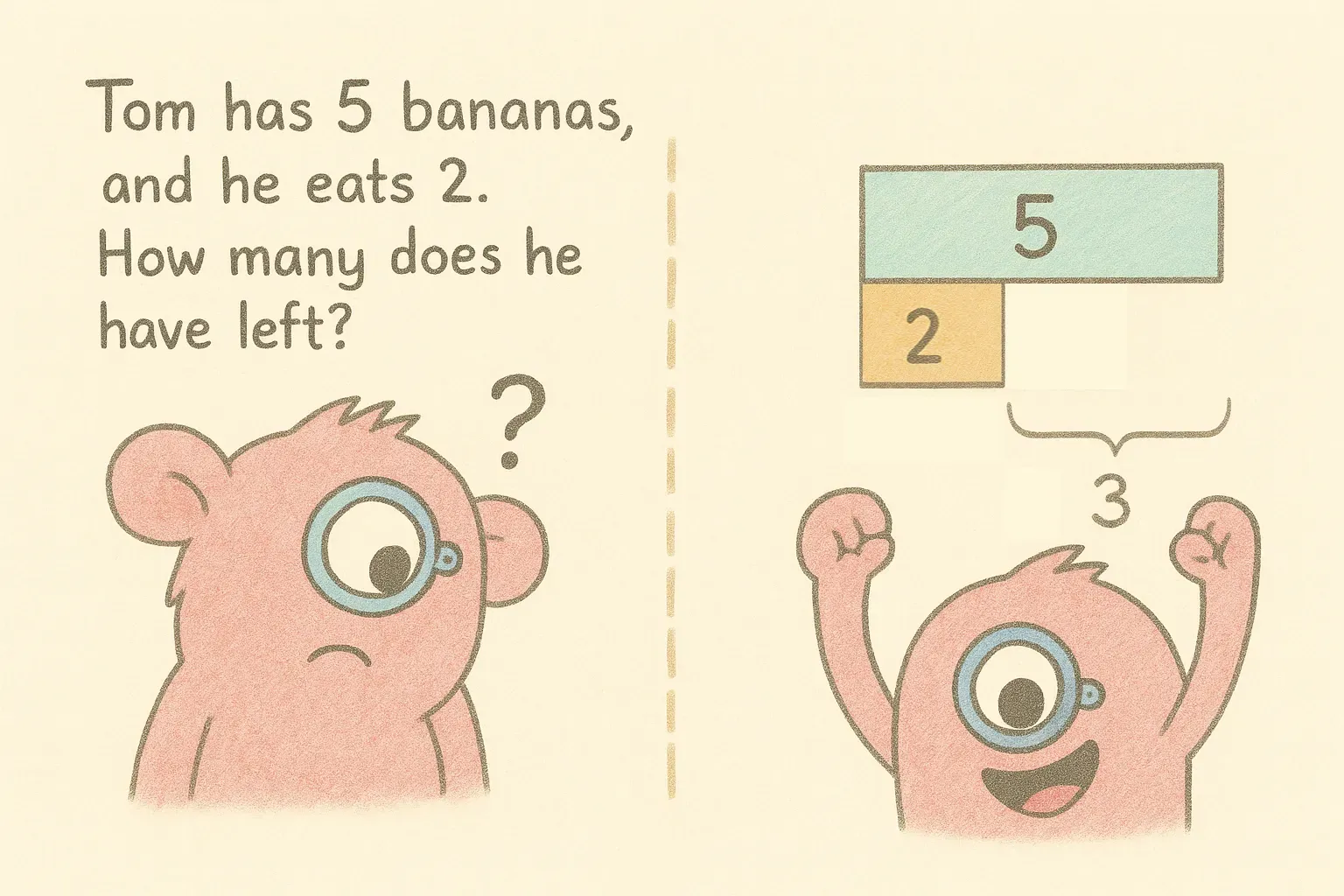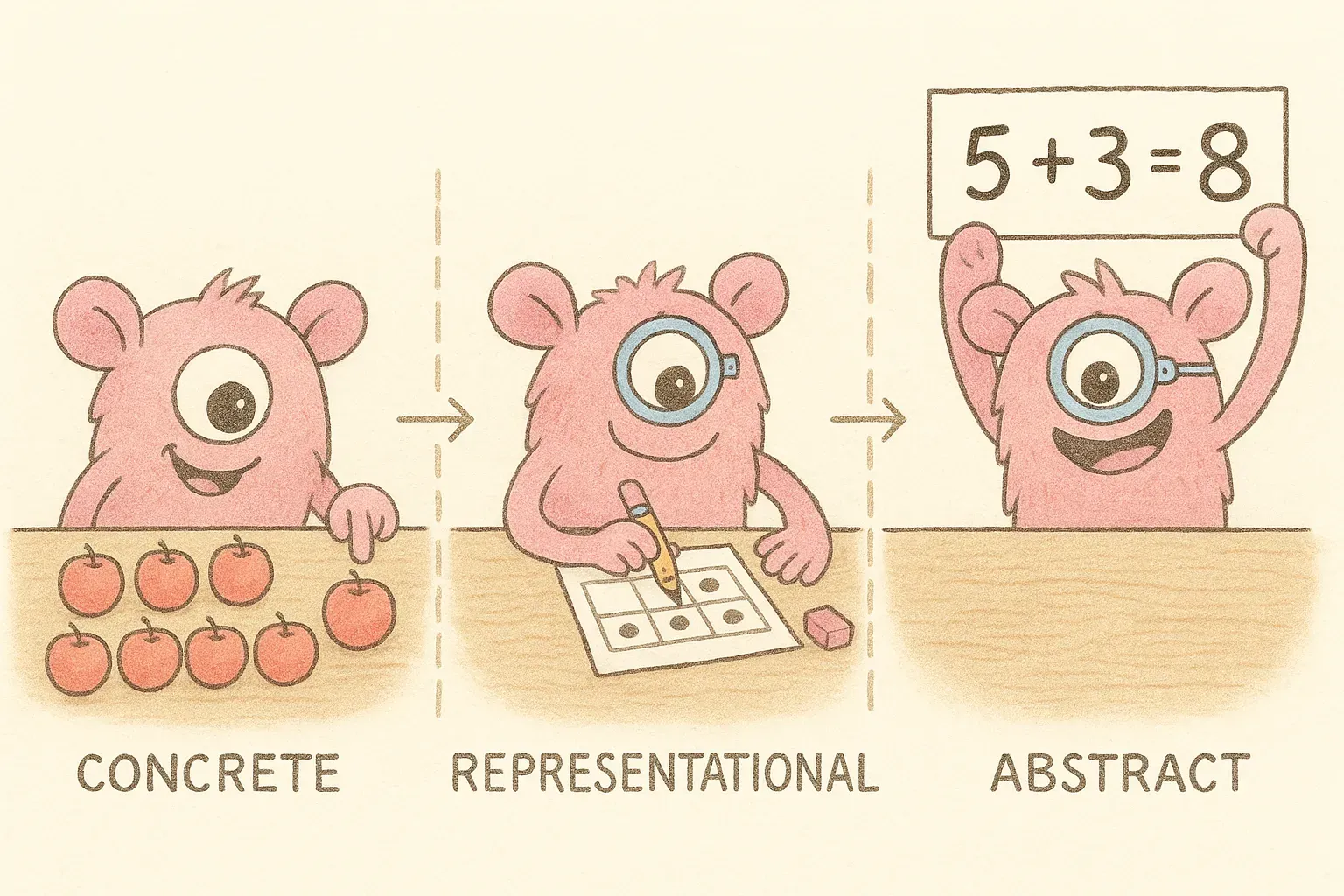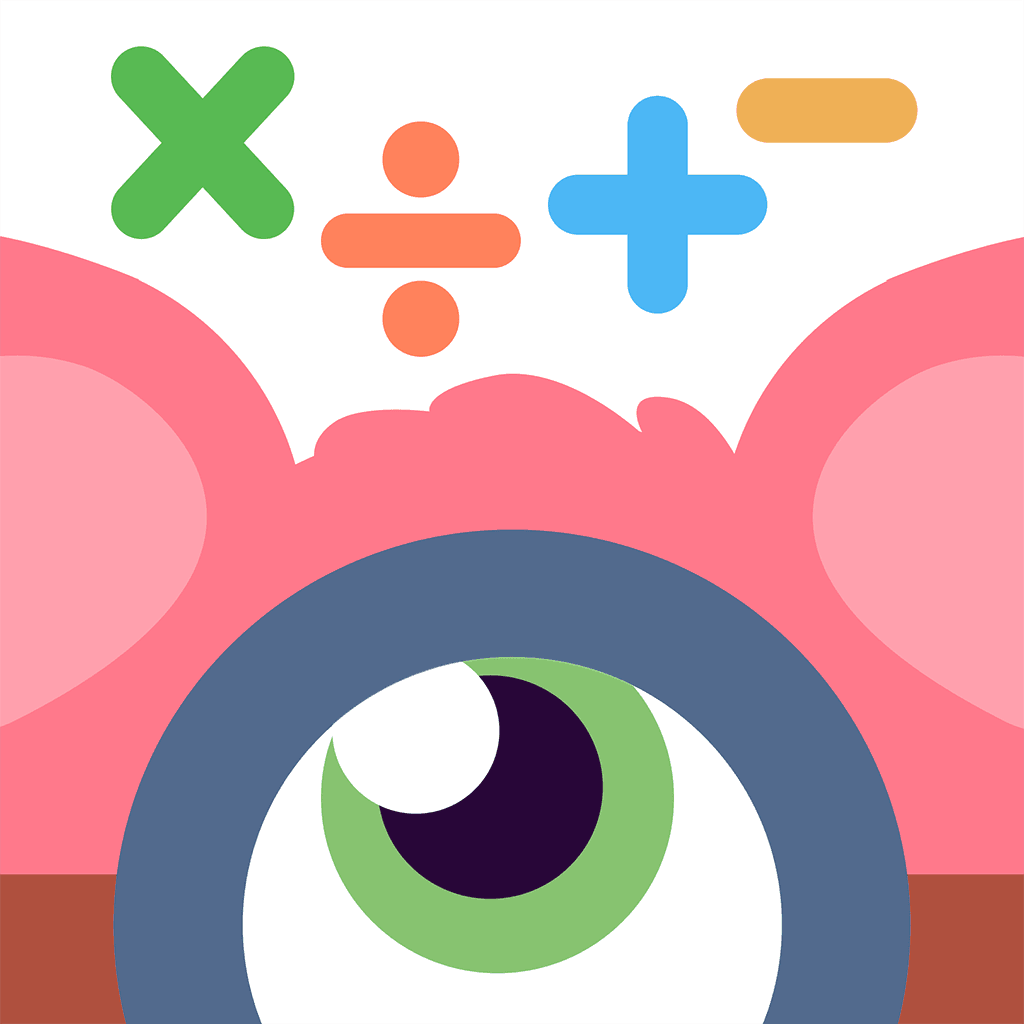Why Visual Thinkers Struggle with Abstract Math (and How to Help)
TL;DR: Does your child seem to “think in pictures” but get lost when faced with equations or word problems? Visual thinkers – people who process information primarily through images and spatial reasoning – often have a hard time with abstract math taught through symbols and text alone. It’s not because they can’t understand math; it’s because traditional teaching doesn’t mesh with how their brains work. In this friendly guide, we’ll explore why visual thinkers struggle with abstract math and share research-backed strategies to help them succeed.
Visual Thinkers vs. Abstract Math: Why the Disconnect?
Thinking in Pictures vs. Thinking in Symbols: Visual thinkers (including many neurodivergent learners) excel at picturing ideas in their mind’s eye. They might remember details as images or solve problems by visualizing them. However, much of school math is taught in a highly abstract way – full of numbers, variables, and formulas that have no obvious visual meaning. For a child who understands best through concrete or visual examples, this jump to abstraction can be perplexing. Temple Grandin, a renowned visual thinker, famously noted that algebra was like a foreign language to her until she linked it to real objects and images in her mind.
Cognitive Differences in Processing: Research shows that visual-spatial reasoning and verbal reasoning are distinct skill sets – and math taps both. Many visual thinkers have strong spatial skills (like rotating shapes or noticing patterns) but weaker verbal working memory. Solving an algebra equation or a multi-step arithmetic problem often requires holding sequences of numbers and rules in mind (a very verbal-sequential task). If a student’s strength is visual thinking, they might get overwhelmed by the working-memory load of purely abstract calculations.

Lack of Visual Context: Abstract math can feel unmoored – like floating in space with nothing to grab onto. Consider a simple equation: 3 + 2 = 5. For an adult it’s obvious, but a visual-minded child might benefit from seeing three apples and two apples combining to make five. As math progresses, the gap widens: negative numbers, variables, and fractions can seem purely symbolic. Without concrete examples or visuals, these concepts remain fuzzy. Many students with learning differences actually misplace numbers on an imagined number line or fail to grasp quantity relationships when taught abstractly.
The Educational Mismatch: Unfortunately, traditional math instruction often races to the abstract formalism and treats visual methods as “training wheels” to be discarded early. There is a long-held myth that true mathematics is symbol manipulation on paper, and drawing pictures or using objects is only for little kids or “struggling” students. This bias can leave visual learners out in the cold. If a child who learns best through images is forced to rely only on rote memorization and formulae, they will likely feel lost and discouraged.
The Science: Visual Processing Is Key to Mathematical Understanding
It turns out that visual thinking isn’t just a quirky trait some learners have – it’s actually a core part of how all human brains do math. Brain-imaging research shows that when we solve math problems, areas of the brain involved in visual and spatial processing light up alongside the areas for numerical reasoning. For example, the dorsal visual pathway (the brain’s spatial processing center) is active even during arithmetic, helping us represent quantities and magnitude.
Strong spatial skills are linked with better math performance, too. A 2021 meta-analysis confirmed a significant correlation between spatial reasoning ability and mathematics achievement across ages and genders. In other words, people who can easily manipulate shapes in their mind or interpret visual patterns often excel in math as well. Crucially, the researchers found this link holds even after accounting for general intelligence and verbal skills.
There’s also evidence that when students are encouraged to use visual strategies, they actually learn better than with purely rote methods. One large study of third-graders with math difficulties found that those who used visual problem-solving techniques (like placing numbers into a simple diagram or picture) performed significantly better than those who only received verbal explanations or memorization drills.
How to Help Visual Thinkers Succeed in Math
- Start Concrete, Then Go Abstract (CRA Method): Whenever possible, begin with concrete objects or examples before introducing symbols. Education research endorses the Concrete–Representational–Abstract (CRA) sequence as highly effective, especially for students who struggle with purely abstract math source. (See our parent’s guide to the CRA approach for more.)

- Use Visual Anchors (Number Lines, Charts, and Diagrams): Visual anchors can range from a simple number line drawn on paper to pie charts, graphs, or color-coded formulas. Guided use of number lines builds better number sense and fluency in young learners.
- Leverage Pattern Recognition (Dots and Visual Grouping): Many visual thinkers are also pattern thinkers. Research in developmental psychology has found that the ability to subitize – instantly recognize small quantities – is an important building block for math skills. Check out our post on subitizing and early math skills for practice ideas.
- Encourage Drawing and Visualizing at Every Step: Teaching students to represent word problems with their own drawings or diagrams dramatically improves accuracy and reduces errors.
- Connect Math to Real-Life Objects and Scenarios: Grandin recalls truly grasping algebra only when she applied formulas to physical objects she could visualize – for instance, using πr² to calculate hydraulic pressure, but it can apply to simpler math too.
- Make It Multi-Sensory and Interactive: Embodied-cognition research shows that involving movement and touch (like finger counting or jumping along a floor number line) deepens mathematical understanding.
- Be Patient and Positive: Timed tests and rote drills can spike anxiety and shut down productive thinking, especially for ADHD learners. Emphasize understanding over speed, and celebrate visual strategies as a strength.
- Consider using digital tools: Apps like Monster Math can provide visual support for learners by showing how Math works visually before transitioning into abstract representation.
Conclusion
Visual thinkers may experience math differently, but with the right approaches they can absolutely succeed – and even excel – in mathematics. By bridging the gap between concrete, visual understanding and abstract symbols, we help learners “see” the math that was hidden before. With patience, creativity, and the strategies outlined here, you can help the visual learner in your life turn abstract math into something they can picture clearly – and even enjoy.
Frequently Asked Questions (FAQ)
Q1. My child always draws pictures instead of writing equations. Is that okay?
Absolutely. Drawing is a valid problem-solving strategy that off-loads working-memory demands and makes relationships visible. Over time you can guide them to translate those drawings into symbols, but the pictures themselves build genuine understanding.
Q2. What quick tools can I use at home to make math more visual?
Number-line tape on the floor, ten-frame dot cards, and everyday items like Lego bricks are powerful and inexpensive. For step-by-step ideas, see our CRA guide for parents.
Q3. Won’t relying on pictures hold my child back on symbol-heavy tests?
Research shows that students who understand concepts visually transition to symbols more fluently than those who memorize procedures first. Encourage them to keep quick sketches in the test margin; it’s a strength, not a crutch.
Q4. How do I balance visual supports with the need for speed in timed tests?
Focus on mastery first, fluency second. Practise untimed with visuals to solidify understanding, then gradually fade supports and introduce gentle timing. Avoid high-pressure drills, which can trigger math anxiety.
Q5. Do digital math apps actually help visual thinkers?
Yes—interactive apps that let kids manipulate objects, slide number-line markers, or build with virtual blocks engage the same visual-spatial networks highlighted in brain-imaging studies. Monster Math is one such game.
References
- Sultan Kaya & Nevin G. Yildiz (2023). “Using the concrete–representational–abstract sequence to teach math skills to a student with autism spectrum disorder in a general education classroom.” International Journal of Developmental Disabilities, 70(8), 1398-1409. link
- Grandin, T. (2009). “How does visual thinking work in the mind of a person with autism? A personal account.” Philosophical Transactions of the Royal Society B, 364(1522), 1437-1442. link
- Gaye, F., Groves, N. B., Chan, E. S. M., et al. (2023). “Working Memory and Math Skills in Children with and without ADHD.” Neuropsychology, 38(1), 1-16. link
- Geary, D. C., Hoard, M. K., Nugent, L., & Byrd-Craven, J. (2008). “Development of number line representations in children with mathematical learning disability.” Developmental Neuropsychology, 33(3), 277-299. link
- Peters, L., & De Smedt, B. (2017). “Arithmetic in the developing brain: A review of brain-imaging studies.” Developmental Cognitive Neuroscience, 30, 265-279. link
- Atit, K., Power, J. R., Pigott, T., et al. (2022). “Examining the relations between spatial skills and mathematical performance: A meta-analysis.” Psychonomic Bulletin & Review, 29, 699-720. link
- Swanson, H. L. (2015). “Cognitive strategy interventions improve word problem solving and working memory in children with math disabilities.” Frontiers in Psychology, 6, 1099. link
- Tsui, J. M., & Mazzocco, M. M. M. (2007). “Effects of math anxiety and perfectionism on timed versus untimed math testing in mathematically gifted sixth graders.” Roeper Review, 29(2), 132-139. link

